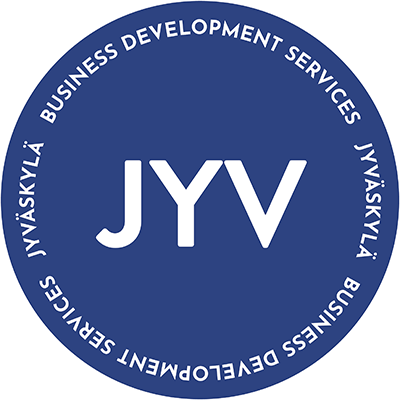GIA Accelerates carbon neutrality for Baltic region industrial areas

Green Industrial Areas (GIA) is a joint development project among Baltic Sea region countries, aiming to create tools and common standards to promote sustainability solutions in industrial areas. Foreign participants visiting Central Finland as part of the project were particularly impressed by the Finnish culture of collaboration and commitment to carbon-neutral solutions.
Industry and industrial area energy solutions play a significant role in reducing environmental impacts such as emissions and advancing the green transition. However, a common standard or certification for green industrial areas has yet to be established.
The GIA project (2023–2025) involves seven countries (Germany, Poland, Denmark, Sweden, Finland, Latvia, and Lithuania) and seven pilot industrial zones. Finland has two pilot sites: Lintukangas and Eteläportti.
The goal is to create a standard toolkit and certification for industrial environments aiming for carbon neutrality. The project addresses six themes:
- Energy
- Emission reduction
- Reduction of virgin land use
- Sustainable logistics and mobility
- Biodiversity and water consumption reduction
- Circular economy and industrial symbiosis
>> Read more about the GIA project.
District heating network sparks interest
An essential part of the GIA project is learning about the practices and existing carbon-neutral solutions in participating countries. The approximately 30-person GIA project delegation visiting Finland in March visited Metsä Group's visitor centre in Äänekoski and DB Santasalo's factory in Eteläportti, Jyväskylä.
 Metsä's Visitor Center Pro Nemus in Äänekoski received great admiration. Visitors found it inspiring and beautifully designed.
Metsä's Visitor Center Pro Nemus in Äänekoski received great admiration. Visitors found it inspiring and beautifully designed.According to Project Manager, Timi Tiira, who works with the GIA project in the City of Jyväskylä, Finland has solutions and operational models that interest foreign stakeholders. These include, for example, urban planning that carefully considers environmental requirements and district heating networks.
“District heating networks are a given in Finland, but in many countries,” Tiira says, “they're a new option for energy distribution.”
He mentions that several industrial areas are involved in the project plan to build local district heating networks because it can effectively promote carbon neutrality.
“In addition to centralised heat distribution, the solution enables the utilisation of industrial waste heat by directing it into the district heating network.”
"Finnish companies understand the opportunities of the Green Transition"
Philipp Houschka-Hering, working at the Ministry of Economic Affairs, Infrastructure, Tourism and Labour of Mecklenburg-Western Pomerania in Germany, found the Finnish business culture of collaboration and resource-sharing on one site, even if they are competitors in another sector, interesting.
“Such examples are not very common in Germany,” he says. Philipp Houschka-Hering
Philipp Houschka-Hering
Both Houschka-Hering and Project Manager Magdalena Maksimowicz from Podlaska Regional Development Foundation in Poland draw attention to the typical "bottom-up" model in Finland, where the change towards sustainable practices starts from the companies. Practices that have proven successful at the grassroots level spread more widely into businesses "upwards".
“This is probably one reason why Finnish companies see the green transition opportunities better than if given from top to bottom. Although adopting new technological solutions is quite expensive, companies understand that they reduce emissions and ultimately save money in the long run,” Maksimowicz points out.
.
Advancing the Green Transition requires long-term thinking
In the GIA project, regional differences have been recognised as affecting the promotion of the green transition. For example, although Germany and Poland are large countries, their challenges and opportunities are somewhat different.
For Germany's future opportunities, Houschka-Hering mentions decentralised energy production and overall energy self-sufficiency, which are becoming increasingly important.
“These changes would also bring additional benefits to the industry, such as better predictability of energy costs.”
He considers the current challenge to be the short-term focus of investments and thinking.
“It would be important to focus not only on profitability tomorrow but also on the long term,” Houschka-Hering says.
 Magdalena Maksimowicz
Magdalena Maksimowicz
For Poland, some challenges in promoting the green transition are practical. For example, the country's energy infrastructure must keep pace with current solutions.
“We have summer days when we cannot send all the energy we produce to the grid due to the poor condition of the infrastructure and too low capacity of the power grid system,” Maksimowicz gives an example. Therefore, investments in infrastructure are essential for implementing new solutions, such as demand response.
“On the other hand, the possibilities arise from science and research. We have several ongoing research projects from which exciting new solutions and technologies for companies and organisations have emerged. These could also interest Finnish companies,” she hints.
Written by: Annukka Ollitervo
Photos from the visit: Pekka Matilainen and Timi Tiira
The Green Industrial Areas (GIA) project aims to promote the sustainability of industrial and business areas by creating tools and establishing a multinational certificate for sustainable industrial areas during the years 2023-2025. The GIA project is implemented in collaboration with countries in the Baltic Sea region, with Jyväskylä City and the Regional Council of Central Finland representing Finland. The project has partners from Germany, Poland, Denmark, Latvia, Lithuania, and Sweden. The project is led by the Ministry of Economic Affairs, Infrastructure, Tourism, and Labour of Mecklenburg-Vorpommern in Germany. The GIA project is funded 80 % by Interreg Baltic Sea Region financing. In addition, the project utilises its own funding and national co-financing.


